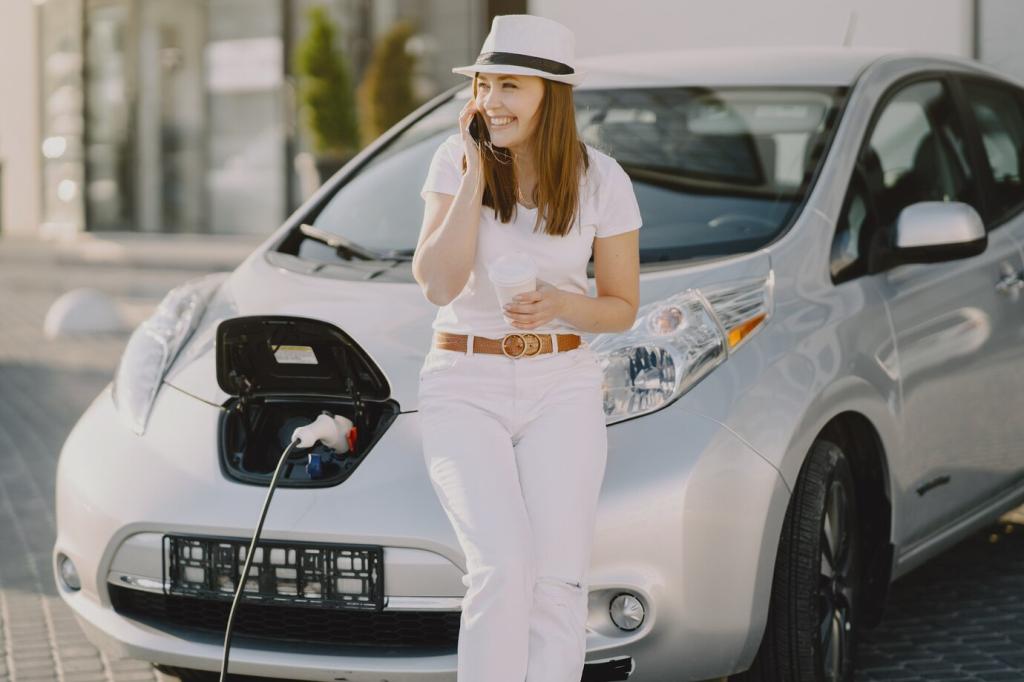
Tax Credits for Electric Vehicle Purchases: A Practical, Human Guide
Chosen theme: Tax Credits for Electric Vehicle Purchases. Start here to understand eligibility, maximize savings, and make confident decisions about incentives that can lower your EV’s cost today and over time. Share your questions in the comments and subscribe for timely updates.
How the Federal Clean Vehicle Credit Works
The federal clean vehicle credit can be worth up to $7,500 for qualifying new electric vehicles, but the exact amount depends on battery component and critical mineral rules, plus income and MSRP caps that determine whether you and the car actually qualify.


How the Federal Clean Vehicle Credit Works
Your credit depends on when the car is placed in service, not ordered. Delivery timing can shift eligibility as rules change, so plan your purchase timeline carefully and keep documentation from the dealer to support the specific date your EV officially enters use.

Vehicle Eligibility: Batteries, Assembly, and VIN Checks
Many credits require final assembly in North America. Two outwardly identical models can be built in different plants, which affects eligibility. Ask for the window sticker, check the assembly location, and confirm details against federal lists before you drive off excited and confident.

You can claim the clean vehicle credit on your tax return using Form 8936. Save your purchase documents, VIN, and eligibility confirmations. Filing properly helps the IRS match records and prevents delays that can hold up a much-anticipated refund or reduce applied tax liability.
Claiming the Credit or Using Point‑of‑Sale Transfer
Starting in 2024, many buyers can transfer the credit to the dealer at the point of sale to reduce the upfront price. Eligibility still applies, and ineligible buyers may have to repay. Confirm the dealer is properly registered and keep the time-of-sale report for your records.
Claiming the Credit or Using Point‑of‑Sale Transfer
Used EV Tax Credit: Big Value on a Smaller Budget
01
The used clean vehicle credit is generally up to $4,000 or 30 percent of the sale price, whichever is lower. The vehicle must cost $25,000 or less, be at least two model years old, and be purchased from a dealer, not a private seller.
02
Income caps are lower for used EVs: $150,000 for married filing jointly, $112,500 for heads of household, and $75,000 for single filers. You also cannot be the original owner, and you can only claim this credit once every three years, so plan purchases thoughtfully.
03
Maya, a nurse with a long commute, found a two‑year‑old hatchback under $20,000 and used the credit to trim costs. She comments that home charging plus lower maintenance finally made weekday driving calmer, cheaper, and—unexpectedly—quietly joyful during early shifts.
Stacking Incentives: State, Local, and Utility Programs
Know what stacks with federal credits
Many state rebates and utility incentives can be used alongside the federal credit, but application windows and funding pools vary. Check your state’s energy office, your utility’s website, and databases like DSIRE to map deadlines before your preferred vehicle sells out.
Home charging rebates
Utilities frequently offer rebates for Level 2 home chargers, and some regions provide off‑peak rate plans that cut charging costs dramatically. Keep invoices, permitting records, and photos of the installation, which programs often require to approve payments and verify safety standards were followed.
Community tips that save real money
Readers often discover little‑known municipal incentives, reduced registration fees, or carpool lane access that boost value. Share what you have found locally, and subscribe so we can surface your tips in future posts that help neighbors make smarter, faster EV decisions.


Planning, Pitfalls, and Timing Strategies
A mid‑year supplier change can alter eligibility even when the vehicle name stays identical. If your delivery slips into a new quarter, re‑check the rules, confirm the VIN, and ask the dealer to document the build details clearly before you accept the keys.
Planning, Pitfalls, and Timing Strategies
Leases may involve the commercial clean vehicle credit, which the lessor claims. Some pass savings into lower lease payments, but not all do equally. Compare quotes line by line and ask explicitly how federal incentives are reflected in your money factor and capitalized cost.
